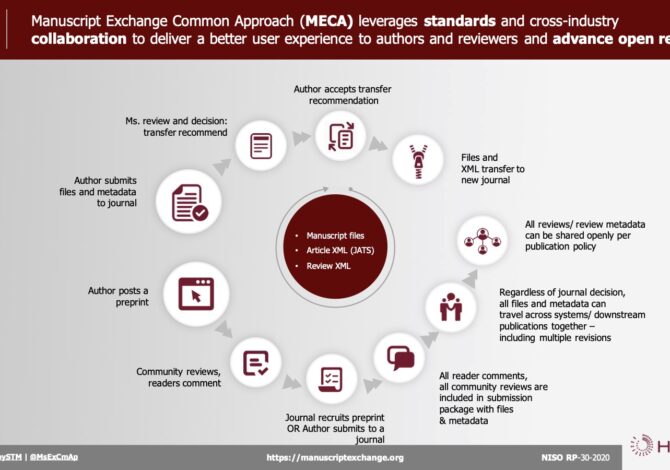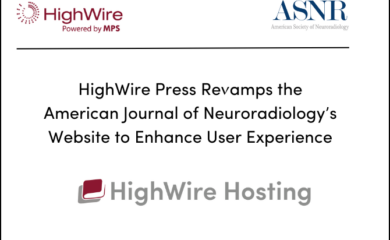In 20161, John Sack, Founder and Managing Director of HighWire reached out to fellow submission system vendors with the idea of setting up a common methodology to transfer manuscripts between varied systems. The idea was to cut short an estimated 15 million hours of researcher time which is wasted each year repeating reviews on subsequent journals2. In 2017, a group of manuscript submission and peer review systems providers took up the challenge and began working together to develop a common approach to manuscript data and file exchange. This project is called the Manuscript Exchange Common Approach (MECA).
The group developed a specification that laid out the protocols for packaging up and sending manuscript files and data in a machine-readable format. The specification includes the protocols that would allow the system to ingest that package and create a submission record in their system.
In 2018, this group submitted a proposal to the National Information Standards Organization (NISO) to codify this file and data transfer protocol. NISO accepted the proposal and a working group, including representatives from across scholarly publishing, was formed. This initiative produced a set of guidelines and best practices that publishers’ manuscript systems and preprint servers can utilize to transfer data and files. MECA has also included peer review data in the transfer package. Meanwhile, the article metadata file is in Journal Article Tag Suite (JATS) Extensible Markup Language (XML) format. However, JATS doesn’t currently handle peer review data.
The following are comments from SVP of Product Management Tony Alves’ Lightning Presentation at OASPA 2021:

Download the Poster as PDF
Cascading workflows and preprints
Presently, cascading workflows have become commonplace within publishing organizations. With the rise of preprint servers as an acceptable source of new submissions, some publishers have implemented mechanisms allowing for manuscripts to flow from preprint servers to appropriate journals in a publisher’s collection. In addition, publishers are also inclined toward the inclusion of comments when an article is transferred from the preprint server to the journal. This includes peer review from pre-publication peer review services like Review Commons, PREreview, PCI, and others along with the reader comments associated with the preprints.
However, the challenge is that each participating preprint server system must develop multiple pairwise solutions for each and every submission system that they need to talk to and vice versa.
MECA recommendations and going forward
MECA has outlined a new peer review XML schema that uses the principles of JATS. While the article XML file contains information about the most recent version of the article being transferred, the review XML contains multiple reviews from all revisions of the submission.
MECA recommended practice was approved on June 26, 2020, and the same was published on July 6, 2020. Along with this, a standing committee was also formed to take up the following activities:
- Promotion of and education on the current recommended practice
- Evolution of the specification to include updated protocols and technology
- Non-English language support
- Integration with efforts by JATS for STM’s Peer Review taxonomy and the Doc Maps Initiative to better enable the easy exchange of peer review comments and data
MECA is waiting to see how these initiatives mature, and if agreed by all the stakeholders, a common standard for creating a machine-readable record of peer review information could be a future possibility. MECA may then incorporate this into the current specifications, replacing the current modified peer review JATS schema.
References
1https://www.csescienceeditor.org/article/manuscript-exchange-common-approach-why-we-need-it-what-is-it-and-whats-next/
2https://www.niso.org/publications/rp-30-2020-meca




